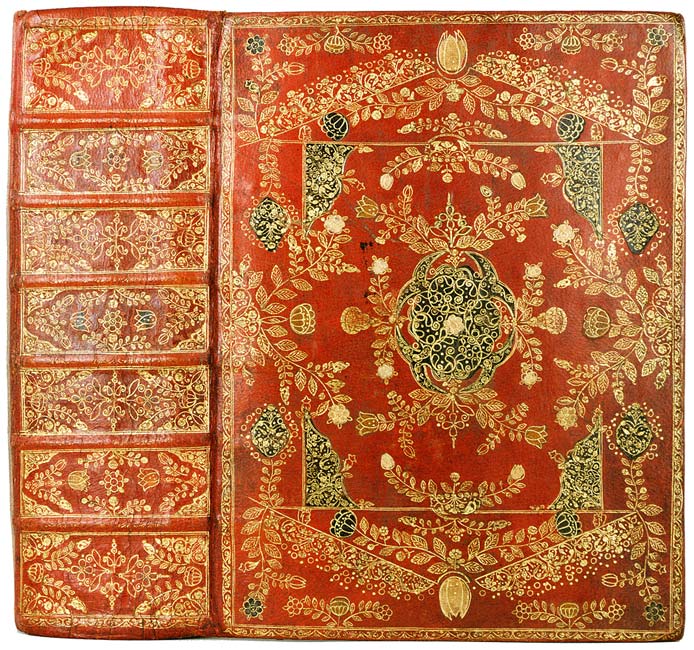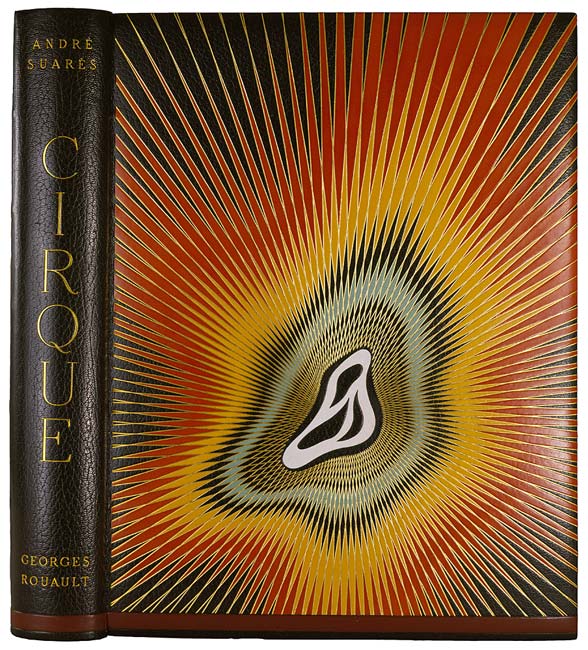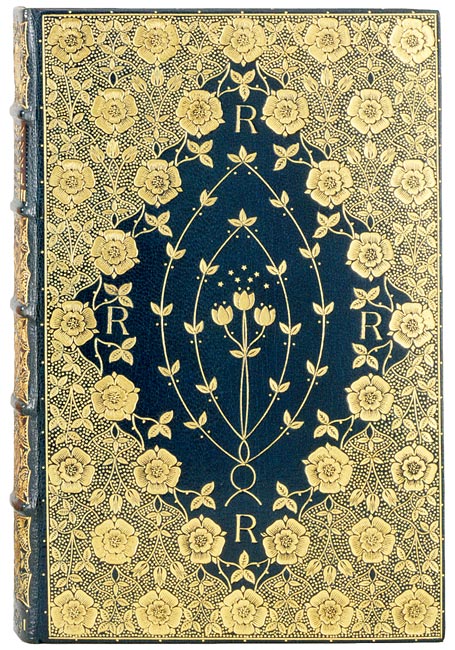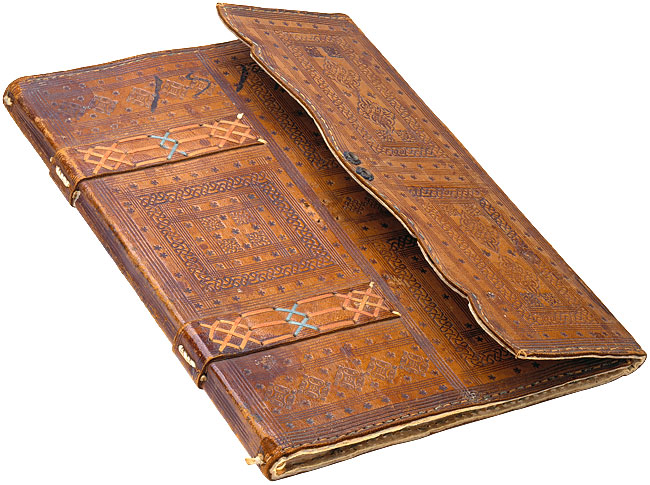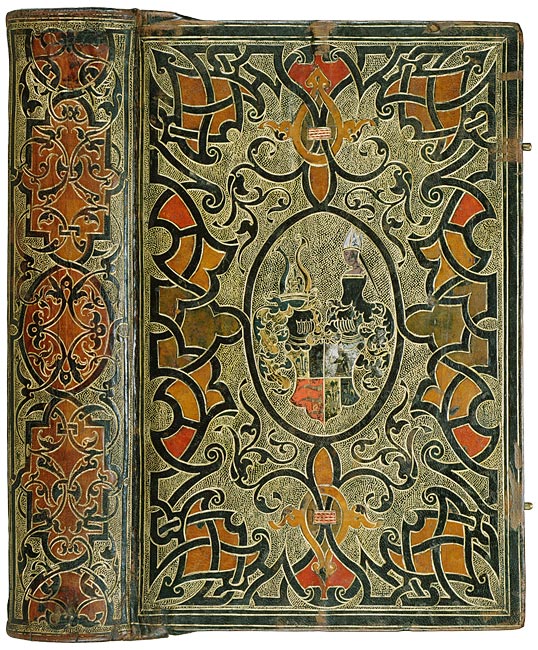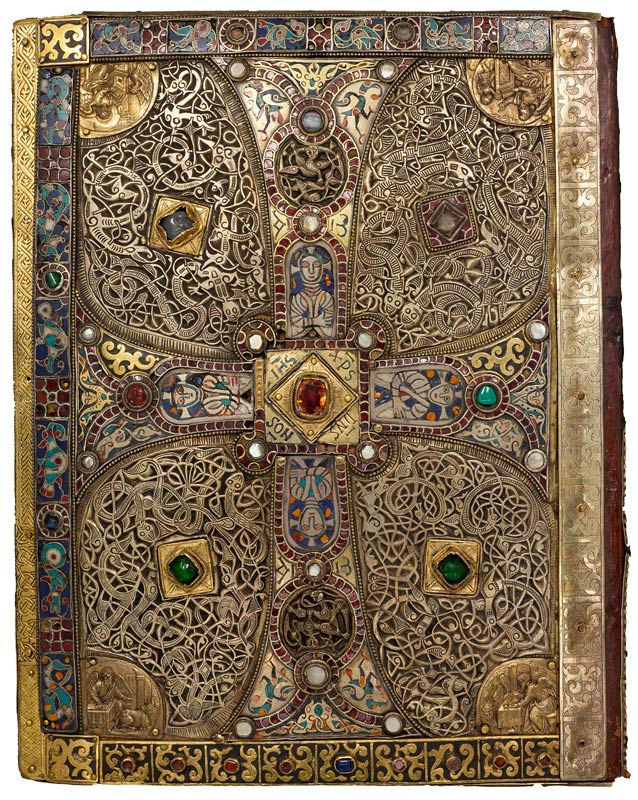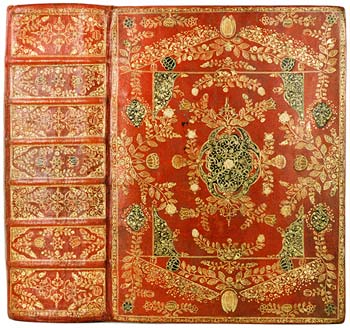
One of the Morgan's core strengths is its collection of historically and artistically significant bookbindings. Begun energetically by Pierpont Morgan himself before 1900, the collection has grown to over 1,000 volumes. It spans the ages—more than 1,600 years—and many regions of the globe.
Protecting the Word: Bookbindings of the Morgan presents a selection of outstanding works from the collection. Highlights include a bejeweled eighth-century binding used on the famous Lindau Gospels, a magnificent seventh-to-eighth-century Coptic work, and a seventeenth-century English Bible and prayer book in stump work embroidery. Together, these and approximately 50 additional works in the exhibition demonstrate the skill and artistry of bookbinding at its finest.
The Lindau Gospels, purchased by Pierpont Morgan in 1901, was the Morgan's first truly significant acquisition in the field of medieval manuscripts. The value of the manuscript itself, however, is rivaled if not surpassed by its jeweled covers. The lower cover is one of the most important of all medieval bindings. It is one of three contemporary pieces of Carolingian goldsmithing ascribed to the so-called court school of Emperor Charles the Bald, grandson of Charlemagne. The upper cover is dominated by a large gold repoussé figure of Christ crucified within a jeweled cross. Surrounding Christ are ten repoussé figures in lower relief, all in mourning poses.
Another work in the show, the Coptic cover of the Gospels, is one of sixty Coptic bindings that Pierpont Morgan purchased in 1911, the year after they were found near the Monastery of St. Michael in Egypt. Almost all the works were found with their original bindings and constitute an essential collection for the study of Coptic bookbinding. The Coptic Tracery Binding is regarded as the finest surviving Coptic binding. At its center is a cross surrounded by interlaced designs composed of two intertwined squares within a circle. All of these elements were cut from a single piece of red leather and sewn over gilt parchment.
Also on view is a Roger Bartlett mosaic binding (1678). The Restoration, the period following the return of the English monarchy to the throne in 1660, was a grand era of English bookbinding. Perhaps the best documented binder of that age was Roger Bartlett. One of his finest works is this Bible, which is bound in red goatskin with colored leather onlays in black, white, and brown. The cottage-roof or split-pediment pattern is characteristic of his bindings.
The exhibition also includes nineteenth- and twentieth-century works as well as contemporary bindings. André Suarès's Cirque is a modern example of a work that combines the artistry of bookbinding, illustration, and writing. The entire book, from its enormous scale to the quality of its paper and presswork, is a work of art in its own right. The Morgan's copy contains original illustrations by Georges Rouault in the form of aquatint—producing the effect of a drawing in watercolor or india ink—and woodcut illustration. The renowned French art dealer Ambroise Vollard published the Morgan's version in 1938, commissioning Paul Bonet, a great innovator in French luxury bindings and among the best-known twentieth-century French art binders, to design the cover. The binding is in a style Bonet called à décor rayonnant (in radiating decoration) to evoke the blaze of radiating circus lights. The Morgan's volume, bound in black goatskin with onlays of various colored calf and gold-tooled in a sunburst pattern, succeeds brilliantly in achieving the binder's intention.
This exhibition is generously supported by The Gladys Krieble Delmas Foundation.
Protecting the Word: Bookbindings of the Morgan is organized by H. George Fletcher, guest curator.
Roger Bartlett Mosaic Binding
Oxford, 1678. On: The Holy Bible, London
J. Bill, C. Barker, R.T. Newcomb, & H. Hills, 1678. PML 59412. Purchased as the gift of Miss. Julia P. Wightman, 1969.


